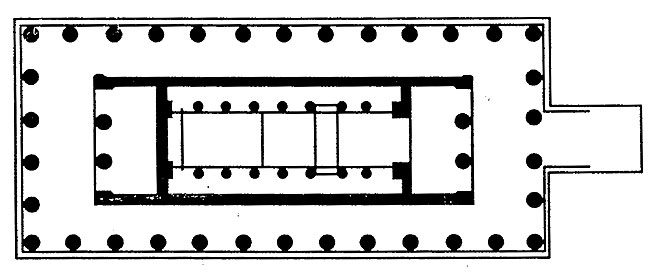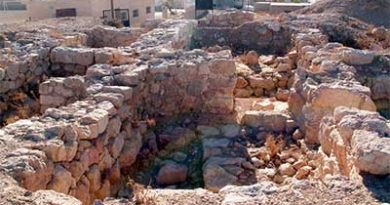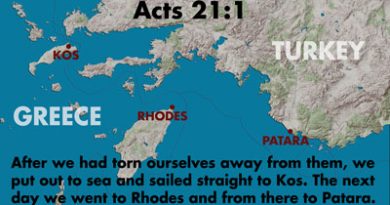Temple of Zeus at Olympia

The massive temple of Zeus, the most important building in the Altis, standing in its very centre, is the largest temple in the Peloponnese, considered by many to be the perfect example of Doric architecture. It was built by the Eleans from the spoils of the Triphylian war and dedicated to Zeus. Construction began c. 470 and was completed before 456 BC, when an inscribed block was let into the east gable to support a gold shield dedicated by the Spartans in commemoration of their victory at Tanagra. The architect was Libon of Elis; the sculptor of the pediments is unknown.
The temple, a peripteral hexastyle with thirteen columns at the sides, has an east-west orientation. The columns, 10.43 metres high and 2.25 metres in diameter at the base, were of local shell-limestone, covered with white stucco. Only the pedimental sculptures, roof tiles and lion’s head water spouts were of marble. The temple comprised a pronaos, cella and opisthodomos; both the pronaos and opisthodomos were distyle in antis. On the floor of the pronaos are the remains of a Hellenistic mosaic with representations of tritons. In front of the pronaos is a small rectangular space paved with hexagonal marble slabs where the victors were crowned. The cella was divided into three naves by two double rows of seven columns. At the far end stood the chryselephantine statue of Zeus, one of the Seven Wonders of the ancient world, created by Pheidias c. 430 BC. The statue, believed to have been over twelve metres high, is described by Pausanias (V, 11) and depicted on ancient coins. It portrayed Zeus enthroned, holding a sceptre in his left hand and a winged Victory in his right. The undraped parts of the statue were of ivory, while the robe and throne, the latter decorated with relief mythological scenes, were of gold. After the abolition of the Olympic Games, the statue was carried off to Constantinople where it perished in a fire c. AD 475.
The temple’s opulent sculptural decoration is a fine example of the Severe Style. The east pediment depicted the chariot race between Pelops and Oinomaos, presided by Zeus, master of the sanctuary, whose figure dominated the composition. The west pediment depicted the battle of the Lapiths and Centaurs, arranged round the central figure of Apollo. The twelve metopes, six at each end over the entrance to the pronaos and the opisthodomos, depicted the Labours of Hercules, mythical son of Zeus. In the Roman period, the undecorated metopes of the fa?ades were hung with twenty-one gilded bronze shields dedicated by the consul Mummius to commemorate his victory over the Greeks in the Isthmus (146 BC). At the apex of the east pediment was a gilt victory by the sculptor Paionios, while the corner-acroteria were in the form of gilded cauldrons.
The temple was burnt by order of Theodosius II in AD 426. Badly damaged by the fire, it was finally thrown down by the earthquakes of AD 551 and 552. Excavations at the temple began by the French in 1829, and were completed by the German School. Parts of the sculptural decoration have been restored and are now on display in the Olympia Archaeological Museum, while the metopes removed by the French expedition of 1829 are in the Louvre. Conservation and cleaning of the monument are currently in progress.
Author: Olympia Vikatou, archaeologist
The source of this article is quoted as the Ministry of Culture and Sports.



